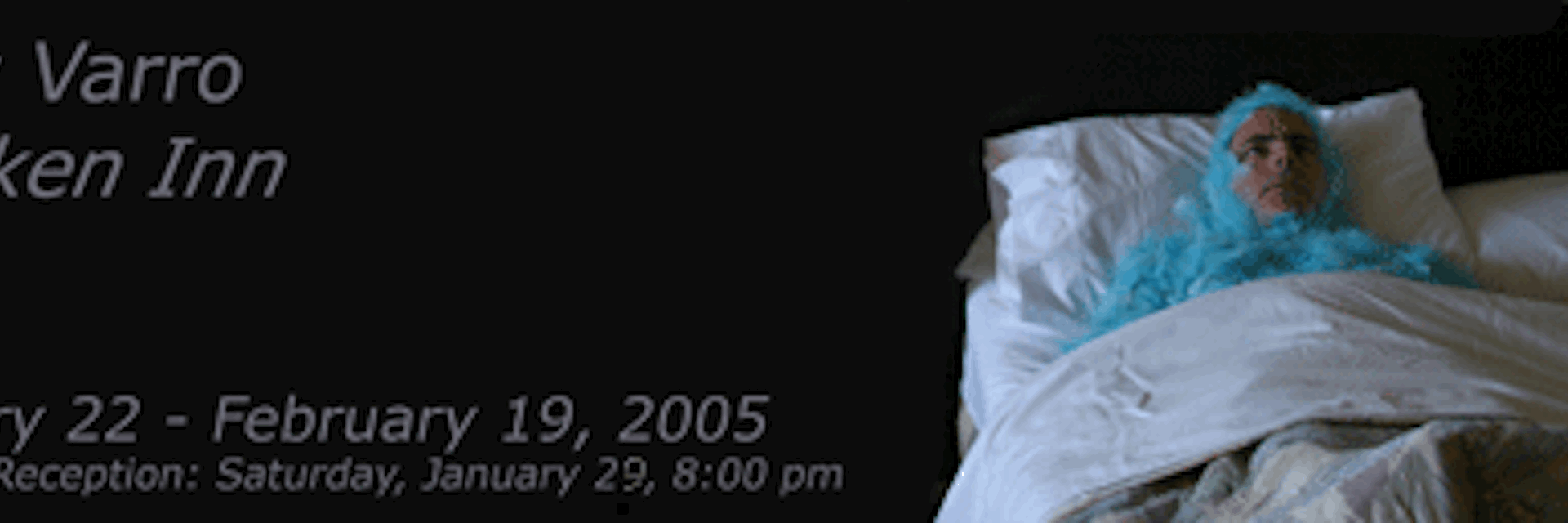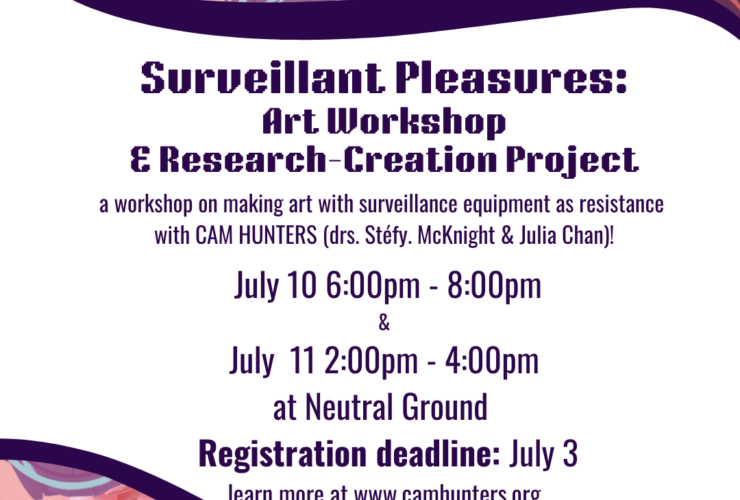Gary Varro
January 22 – February 19, 2005
Opening Reception
Saturday, January 29, 2005
8:00 pm
Within the Chicken Inn
WITHIN THE CHICKEN INN Joanne Bristol and Michael Toppings
1
There is a Depression Era family story about how my grandma could look out across the Prairie, see guests coming from a few miles away down the road, run out to the chicken coop, grab and behead a chicken and have it in the oven before they arrived at her house. In other words, she was resourceful. Also, before Medicare in Saskatchewan, my grandparents would pay the doctor’s bill with chickens.
2
When I was a child, I was given a baby chick at Easter. It, of course, grew into a full-sized chicken. I baptized her Henrietta. She ate mainly oatmeal and never laid an egg. She would spend the winters in the garage in a little shanty-like cage. We gave her away to the friend of a friend of a friends cousin whose parents ran a farm. I have often wondered what happened to her, whether she had ever laid an egg or whether she was ever eaten. The photograph of Gary as chicken with gun reminded me of her the most.
3
Cages are one thing, but it is also interesting to think of how humans try to hold or contain animals through language. In the mid 300s BC, when Plato defined man as a “featherless biped”, the Cynic philosopher Diogenes presented a plucked chicken, claiming, Here is Platos man. The Cynicism of ancient Greece derives its name from the Greek word for dog.
4
The objective of Cynicism was self-sufficiency (“autarkeia”) and the cynic virtues were the qualities through which freedom was attained. The most important virtue was callousness or apathy, which had to be attained through training. Another virtue was ruggedness or endurance. The lower animals were to be emulated insofar as they were independent of clothing, shelter and the artificial preparation of food. Cynics sought to disregard laws, customs, conventions, public opinion, reputation, honour and dishonour.
5
The citation chicken hawk (a public person who advocates war but who declined significant opportunity to serve in uniform during wartime) is attested from at least 1988, Amer.Eng. In the queer community, a chicken hawk is an older man who likes younger men. These younger men are often referred to as uncooked chicken. The latter two expressions are attested from at least 1959, DragQueenEng.
6
Tarring and Feathering was a typical punishment used to enforce justice on the early American frontier. Both tar used in construction and feathers from food sources (e.g. chicken) were plentiful in the middle and western United States where the practice primarily flourished. The idea was to hurt and humiliate a person enough so they would leave town and cause no more mischief. Hot tar was either poured or painted on to a criminal while he (rarely she) was immobilized.
Then the person either had feathers thrown on him from buckets or barrels or else he was thrown into a pile of them and rolled around. The victim was then taken to the edge of town and set free in the hopes he would not return. The feathers would stick to the tar for days making the person’s sentence clear to the public. While this practice was extremely cruel it was usually an effective manner of exile. The image of the tarred-and-feathered outlaw is so vivid that the expression remains a metaphor for a humiliating public castigation, many years after the practice disappeared.
7
It is interesting that Gary has tarred and feathered himself (albeit fashionably and in haute couture style) as if in self-punishment. Or perhaps he feels inherently tarred and feathered – by life, by society, by circumstance, by religion and morality. By creating his own ritual of humiliation he has perhaps unwittingly or calculatedly empowered himself – an empowerment through self-flagellation. It is a reclaiming of sorts – on his own terms, within his own vivarium, on his own delineated grounds, as if to say you cant touch me anymore. Speaking of delineated groundwhats up with the motel?
8
Motels: fornication, road-movie, murder and mayhem, Norman Bates, suicide, fugitives, highways and roadsides, childhood holidays, neon signs, bibles, pop machines, smelly bed covers, vibrating beds, take-out food, suspicious stains on mattresses and on papered walls.
9
Is it ironic that chicken is a euphemism for fear? Why would chickens be afraid? Were they more afraid in the past, or are they only afraid now, because humans do weird things to them? Was it something about the way they moved that caused people to make an association between human fear and chickens? Was it because of their ability to hop away when someone approached them? Did their jerky gait look unattractive, making them open for sloppy and inaccurate human devaluation? Or were people just jealous of their lovely plumage and ability to (almost) fly? Why do humans continue to project their own onto the other? How can we undo
this mess, this practice of encapsulating and reducing the other? When will we cease to want to saut things in a fine reduction of chicken stock?
10
Fact – originally, Gary had considered entitling this project either Peck, ChickenShitHead, or Cluck. It was inspired, in part, after overhearing several children conversing, with provocations that included, what are you, chicken? The taunt reminded him of growing up, of peer pressure, of being humiliated and ridiculed as a child and teen. It, ultimately, responds to having grown up queer in Saskatchewan. I, personally, am proud to admit that I once dressed up as a chicken for a performance piece. I was supposed to be Tweety Bird but could only find a chicken outfit to rent. It was a liberating experience. Finally, I had become the chicken I knew, at heart, I truly was. There is a site on the internet called Subservient Chicken. It is a Burger King site. Id say that 99% of all sites having to do with chickens have to do with their consumption (in one form or another).
11
Animals raised in factory farms are given diets designed to boost their productivity and lowers cost. The main ingredient is grain, which is kept at artificially low prices by government intervention. To further cut costs, the feed may contain by-product feedstuff such as municipal garbage, stale cookies, poultry manure, chicken feathers, bubble gum, and restaurant waste. Until 1997, cattle were also being fed meat that had been trimmed from other cattle, in effect turning herbivores into carnivores. This unnatural practice is believed to be the underlying cause of mad cow disease.
12
St-Hubert B.B.Q. is wildly popular in Qubec though hardly fine dining. I once ate there with my friend Steve who was visiting from Nova Scotia. I was afraid someone would see me eating there. We, of course, just had to be seated by the front window, facing out onto the very public St-Denis Street. I ate with the right side of my face resting in my right hand so as not to be seen. I told Steve I had a bit of a toothache. I found a weird thing in my meat. Could have been a little chicken tumour. It did chew like chicken though.
Sources:
#4: (http://www.benbest.com/philo/diogenes.html)
#6: (Wikipedia, the free encyclopedia. http://en.wikipedia.org/wiki/Tarring_and_feathering)
#11: (http://www.eatwild.com/basics.html)



